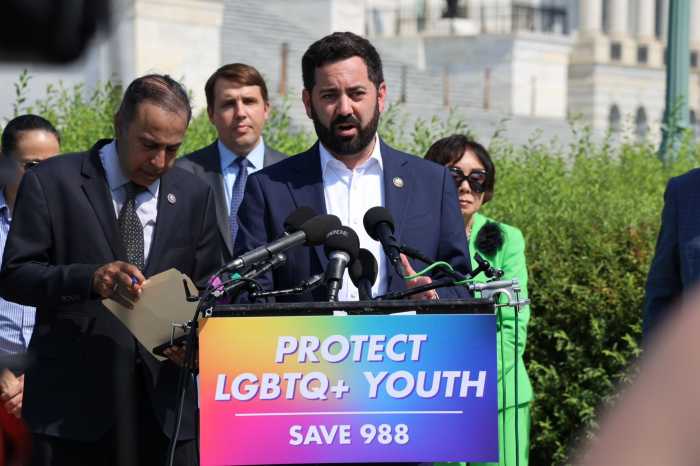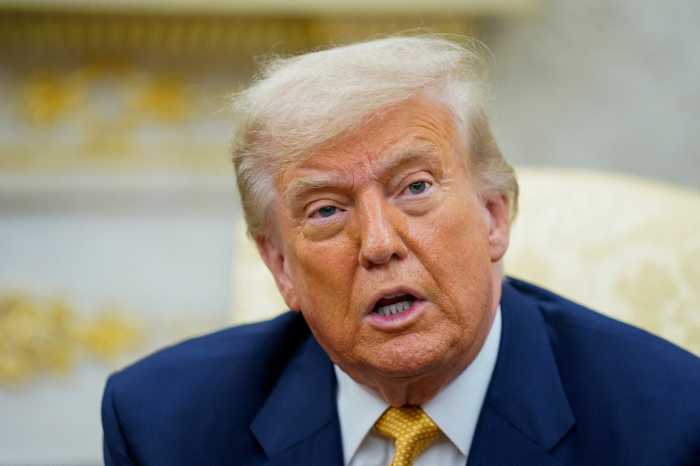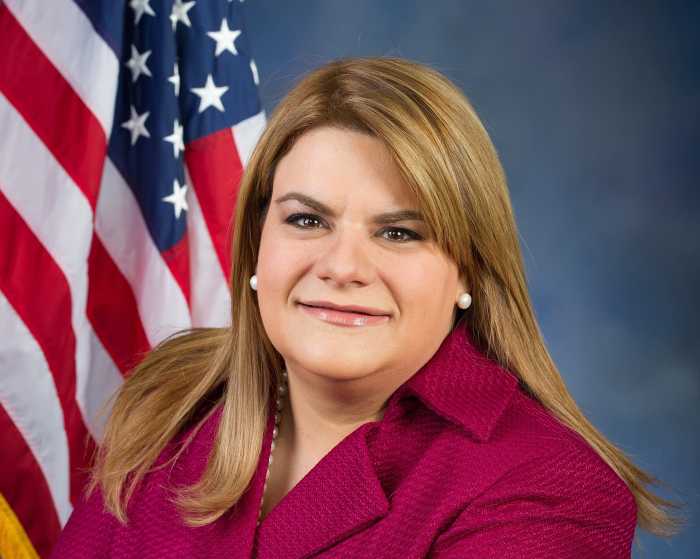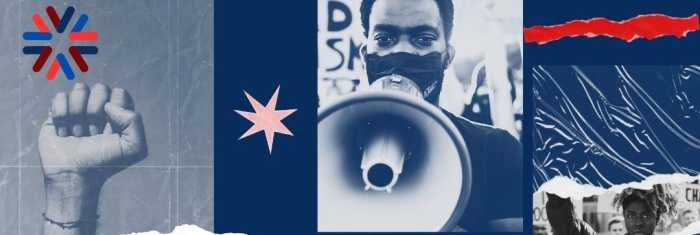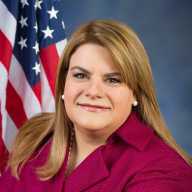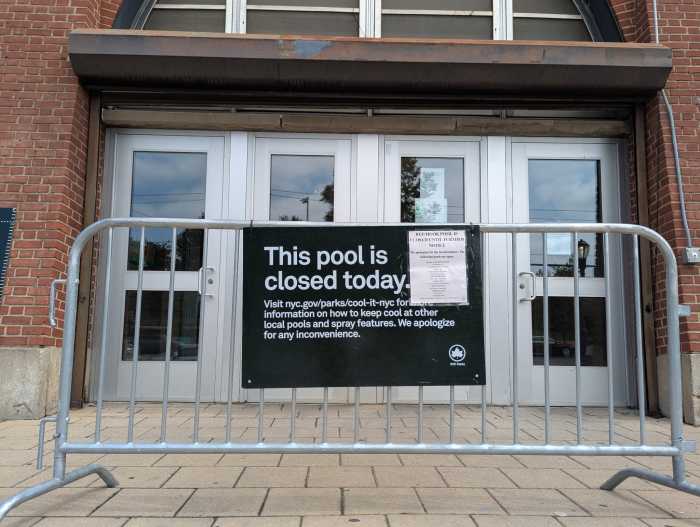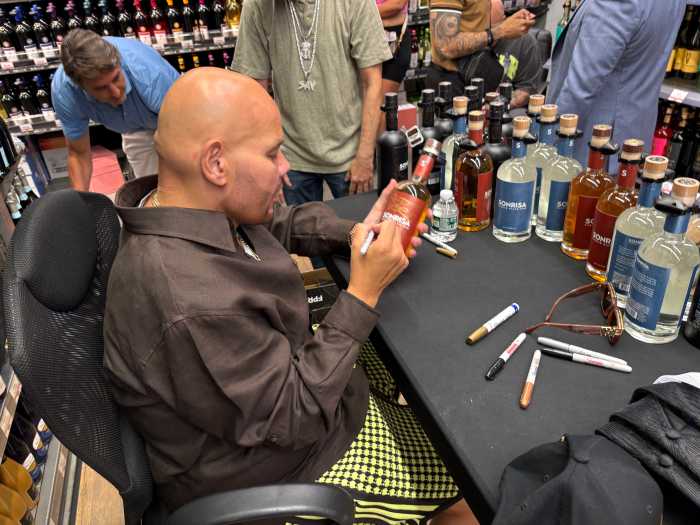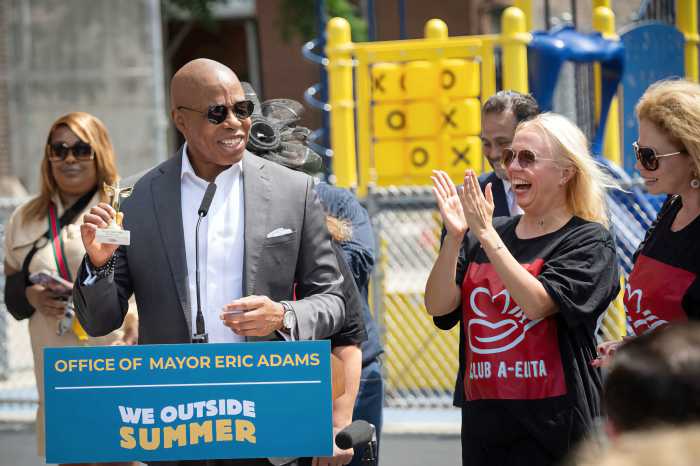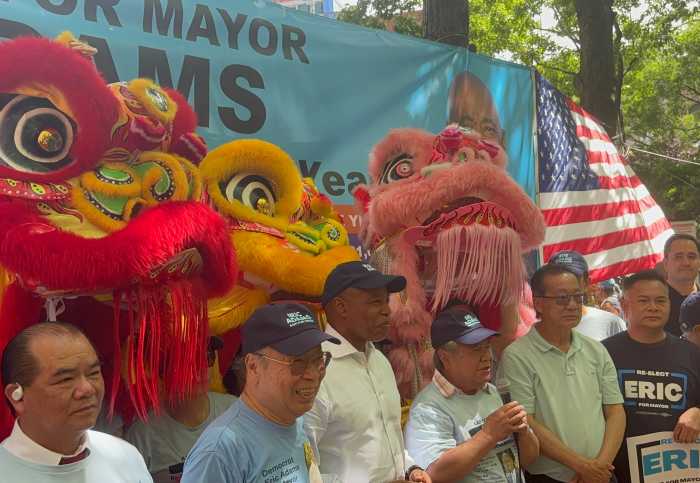O’Connor Cast Aside Conservative Ideology in Landmark Gay Rights Assents
In 1981, when Pres. Ronald Reagan nominated Sandra Day O’Connor, an Arizona state appellate judge, to the Supreme Court, few would have predicted that a woman known for a conservative record both as a jurist and a state lawmaker would form the centrist linchpin and cast affirmative votes in the two most important gay rights cases to be decided by the Supreme Court during her tenure—Romer v. Evans, in 1996, and Lawrence v. Texas, in 2003.
O’Connor’s earliest significant vote in a gay rights case, in fact, told a very different story. In 1986, she signed on to the intensely homophobic 5-to-4 majority decision in Bowers v. Hardwick, which upheld Georgia’s felony sodomy law. The majority opinion, authored by Justice Byron White, rejected as “facetious” the claim that the constitutional right of privacy invalidated that statute. Unlike Lewis Powell, who after his retirement in 1987 stated that he regretted his affirmative vote, O’Connor has never publicly discussed her vote.
Nobody can say for sure why or how O’Connor’s views on gay rights shifted, but they certainly did shift. Perhaps the generally negative public reaction to Bowers affected her. It is also likely that in the years after that decision, O’Connor began to encounter more openly gay people in her professional life, including among the law clerks serving the Court.
Rumors of family members and friends who might have come out to her have also circulated. This writer recalls sitting in a meeting of gay civil rights lawyers during which one lesbian attorney from Arizona talked about her longstanding social acquaintance with the Day family, and mentioned having written a “coming out” letter to O’Connor.
One of the most memorable openly gay people O’Connor encountered, just a year after the Bowers case, was the redoubtable Mary C. Dunlap, a leading lesbian feminist lawyer and co-founder of the National Center for Lesbian Rights, who argued before the Supreme Court in the Gay Olympics case. The U.S. Olympic Committee had obtained an injunction against the organizers of the Gay Olympics in San Francisco, banning that group from using the word “Olympics” because it claimed people would be misled into thinking that the USOC had sanctioned the event. Dunlap, known for her outspoken presentations, was a master appellate advocate. She dressed for the argument before the Court in March 1987 by wearing the formal black tuxedo that male lawyers had traditionally worn for such arguments, which caused consternation among a few of the justices and likely made quite an impression. (Later, Dunlap auctioned off the tuxedo for charity during an appearance as keynote speaker at the annual dinner of New York City’s gay lawyers association.)
The Court treated the case as an ordinary copyright and trademark dispute, rejecting Dunlap’s argument that Congress giving the USOC a monopoly over the word “Olympics” violated the First Amendment. But to the surprise of legal observers, O’Connor dissented from the Court’s ruling, finding a plausible free speech claim.
A few years later, she also dissented when the Court refused to help resolve the question whether self-insured employers could eliminate coverage for HIV-related claims under their workplace health insurance plans.
Again, a personal encounter may have played an important part in the justice’s dissenting vote. O’Connor was the 1992 commencement speaker at New York Law School. The student speaker at the ceremonies was a proudly open gay man, Steven Peduto, a brilliant student who had been diagnosed with AIDS and battled through numerous medical and financial crises to be able to complete the program with one of his class’ highest grade point averages.
As he entered his last semester, Peduto’s health rapidly deteriorated and he resolutely arrived at the Lincoln Center graduation in a hospital ambulance. Sitting in a wheelchair on stage, Peduto watched as the academic processional, including Justice O’Connor, came into the hall. When Peduto struggled to the podium to deliver his remarks, he was standing almost directly in front of Justice O’Connor. A photographer for Newsday, which ran a large front-page color photo the next morning, captured the stricken look on her face.
During his talk, Peduto mentioned the shock of having lost his health insurance coverage just as he was heading into his first semester final examinations.
Peduto tragically died just weeks after his law school graduation.
Could hearing about this predicament under such memorable circumstances have affected O’Connor’s thinking when she considered how to vote on the H & H Music case, in which the employer had responded to one employee’s health situation by imposing a $5,000 lifetime cap on HIV-related claims? The U.S. Court of Appeals in Houston found no violation of federal law, the Supreme Court refused to review the case and O’Connor dissented.
By the mid-1990s, it had become clear that Justices O’Connor and Anthony M. Kennedy, Jr. occupied the middle ground in an increasingly conservative Supreme Court, and that for gay rights advocates to win a case before the Court, they had to win the votes of O’Connor and Kennedy. Ultimately, it turned out that Kennedy was the author of the two major gay rights victories, by assignment from Justice John Paul Stevens, who was the senior judge in the majority both times.
O’Connor joined in Kennedy’s Romer opinion without writing separately. The 1996 ruling found that Colorado’s Amendment 2, approved by that state’s voters, deprived gay men and lesbians from the equal protection of the laws, guaranteed by the Constitution, in banning them from enacting any state or local measure that would bar discrimination based on sexual orientation.
O’Connor’s participation in the 6-to-3 majority opinion in the Lawrence v. Texas decision seven years later indicates the evolution of her thinking on gay matters. Kennedy wrote for himself and four other members of the Court, holding that the Texas sodomy law violated the 14th Amendment due process clause by imposing an unjustified restriction on individual liberty. Perhaps O’Connor was not willing to recant her vote in Bowers v. Hardwick by joining an opinion that held that Hardwick was “wrong when it was decided,” so she wrote a separate opinion, striking down the Texas law on a different legal theory. But in so doing, she inscribed in the official reports of the Supreme Court—for the first time in the context of an opinion decided on the merits—the suggestion that government policies that discriminate against gay people should be subjected to more than just the minimal “rationality review” that has been favored by the lower courts. Governments had to demonstrate more justification than a merely rational reason for upholding discriminatory public policies against gay people.
In her concurrence, O’Connor suggested that the Texas law violated the 14th Amendment’s equal protection clause because, in her view, moral objections to homosexuality could not justify outlawing conduct for gay people but allowing it for non-gay people. Even though she had accepted moral justifications in Bowers v. Hardwick, she argued that equal protection raised different issues. The Georgia law in Bowers was “evenhanded,” prohibiting sodomy for everybody on moral grounds. But the Texas law was discriminatory on its face, affecting only homosexual sodomy, and O’Connor argued that because it burdened personal association in a very direct way, it should be subjected to a “more searching” kind of rationality revie
Because she was speaking only for herself in Lawrence v. Texas, not for the majority, O’Connor’s equal protection theory establishes no precedent. But in light of her opinion in that case, her failure to dissent when the Court refused to review the Florida adoption case involving gay parents earlier this year was puzzling. Perhaps she concluded that the votes to reverse the ruling were not there on the Court or perhaps she found persuasive the state’s “role model” argument for justifying excluding gays from being adoptive parents. However, a straightforward application of her “more searching” rationality approach from Lawrence would certainly cause the Florida law to fall, in light of the state’s inconsistent approach, allowing gay people to be foster parents in semi-permanent placements.
While O’Connor became an important vote for gay rights during her last decade on the Court, she was not consistently so.
In 2000, she joined Chief Justice William Rehnquist’s opinion for the Court, reversing the New Jersey Supreme Court and holding that the Boy Scouts of America could defy New Jersey’s Law Against Discrimination by disqualifying James Dale, a gay man, from being an assistant scoutmaster. And she joined with the unanimous Court in reversing the Massachusetts Supreme Judicial Court and ruling that the organizers of Boston’s St. Patrick’s Day parade could ban a gay Irish group from marching in the parade under its own banner.
In the Court’s most important AIDS-related ruling to date, Bragdon v. Abbott, which held that the Americans with Disabilities Act could protect an HIV-positive woman from being denied services by a dentist in his private office, O’Connor joined Kennedy’s majority 6-to-3 opinion. This was consistent with her much earlier vote to join Justice William J. Brennan’s opinion in School Board of Nassau County (Florida) v. Arline, a 1987 decision holding that a person with an infectious disease could be covered by a predecessor federal law banning workplace discrimination against “otherwise qualified handicapped individuals.”
O’Connor’s retirement will certainly affect the outcome on future gay rights cases, which are bound to include a challenge to the constitutionality of the Defense of Marriage Act that forbids federal recognition of same-sex marriage. There is also a renewed drive to challenge the ban on gays in the military, with several cases now pending in the lower federal courts. And, since the 11th Circuit’s decision in the Florida adoption case has inspired anti-gay forces to try to export the ban on gay adoptions to other states, there are likely to be additional challenges to those laws. Challenges are likely as well to state anti-gay marriage amendments recently adopted.
The Court has so far ducked transgender issues almost entirely, denying review in several important recent cases, but at some point the pressure will build to address the constitutional rights of transgendered people who are denied appropriate recognition for their gender, especially in the context of marriage, as well as the possibility that transgender discrimination violates the federal Civil Rights Act of 1964, as some lower courts have ruled. The Court may also end up addressing the issue of equal protection rights of gay people as litigation continues against discriminatory public employers and public school boards.
What is the likelihood that a Bush appointee would be as supportive of gay rights as O’Connor came to be in recent years?
The president’s appointments to the courts of appeals have included notably homophobic judges, most prominently William Pryor, the former Alabama attorney general who cast the crucial vote in the 11th Circuit denying re-argument in the Florida adoption case, and Janice Rogers Brown, the former California Supreme Court justice who has been a dissenting voice in that court’s important gay rights rulings of recent years. In fact, there was a collective sigh of relief in California when it appeared that Brown would not be participating in a trio of cases concerning lesbian parenting rights now pending before that court.
On the other hand, David Bunning, a Bush appointee to a district court seat in Tennessee wrote affirmatively of the equal access rights of gay students seeking to form a Gay Straight Alliance at their high school. It is by no means inevitable that a Bush appointee will be consistently anti-gay, regardless of the legal context of a case.
But this will be Bush’s first Supreme Court appointment, and Supreme Court appointments are quite different from lower court appointments. In the past, presidents have been surprised when their Supreme Court appointees turn out to be more liberal or more conservative than they had expected. Pres. Dwight D. Eisenhower was disappointed at how liberal Earl Warren and William Brennan turned out to be. Byron White, in contrast, emerged as rather more conservative than one suspects Pres. John F. Kennedy anticipated. The Justice Department officials who selected Sandra Day O’Connor and Anthony M. Kennedy for appointment by Reagan during the 1980s would have been startled to be told that these two would vote to strike down all the remaining sodomy laws in the country in 2003, and certainly Pres. George H.W. Bush did not anticipate that his conservative New Hampshire appointee, David Souter, would become a reliable vote for gay rights on the high court.
The president must also be concerned about the impact a Supreme Court confirmation battle this summer may have on the congressional elections in 2006. In order to advance his legislative agenda and avoid searching congressional committee investigations of his administration, Bush needs to maintain Republican majorities in both houses of Congress. He may have some motivation to avoid the bruising battle that confirming an appointee with an established record of extreme conservatism would entail by appointing somebody with less of a traceable record, and such appointments are most likely to yield surprises.
gaycitynews.com

